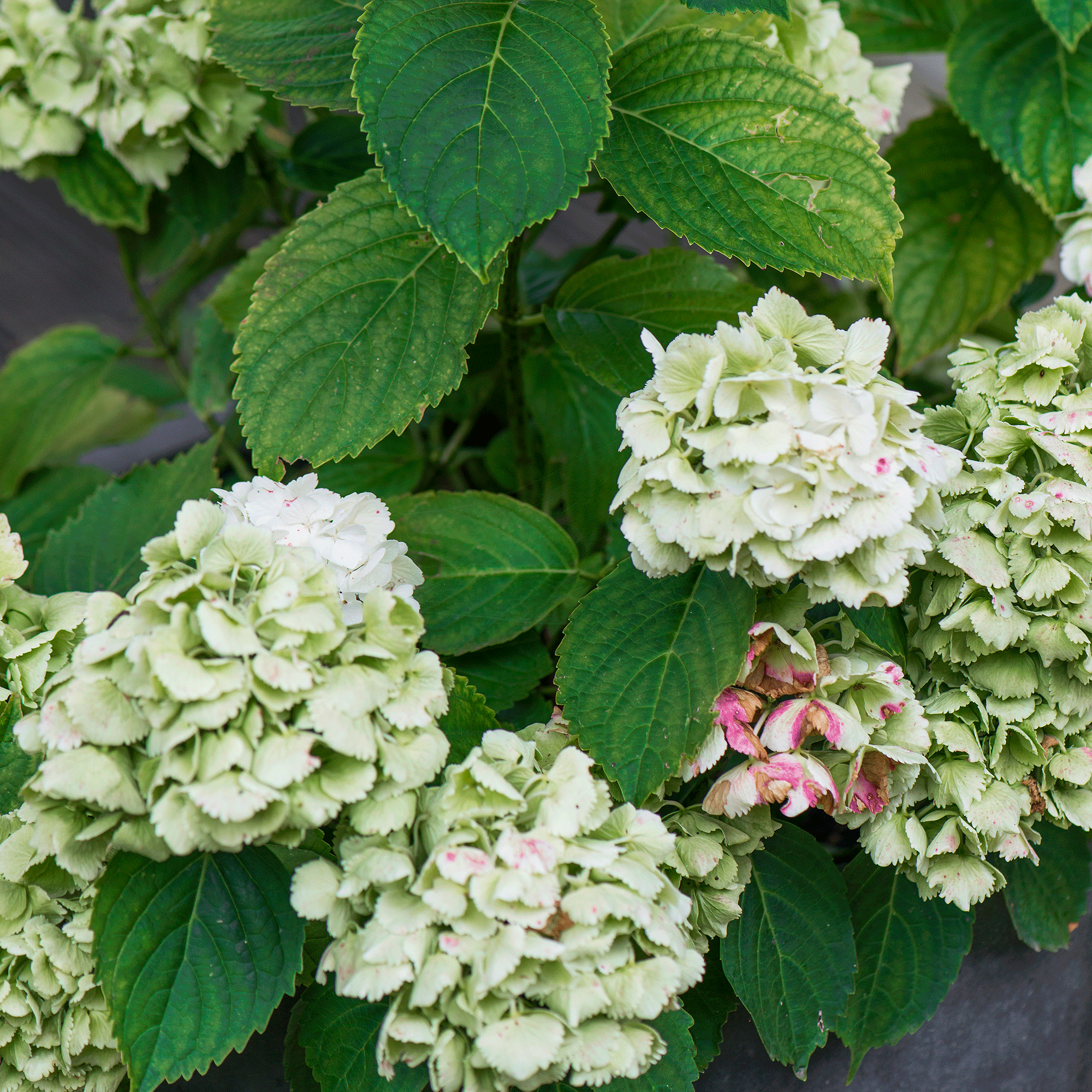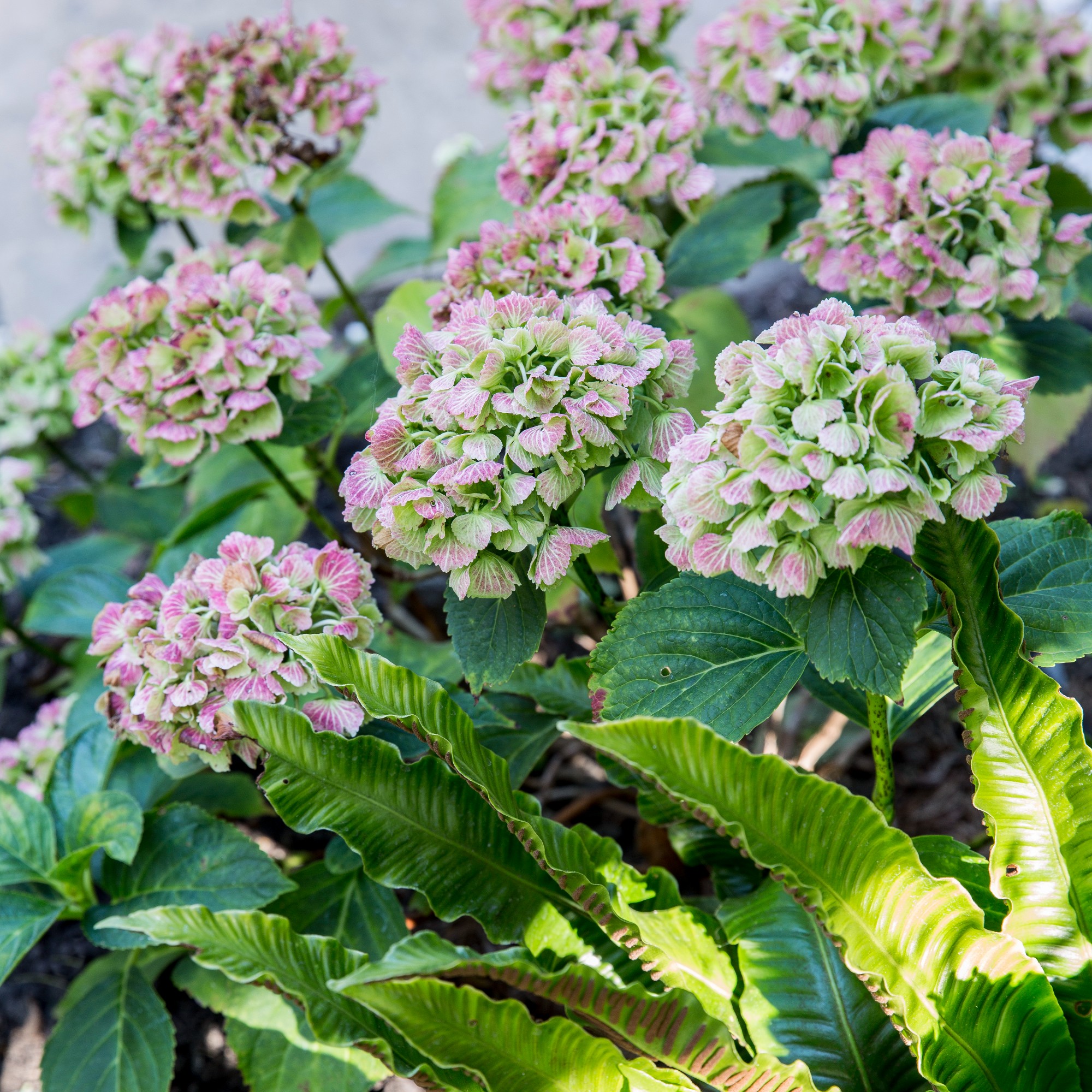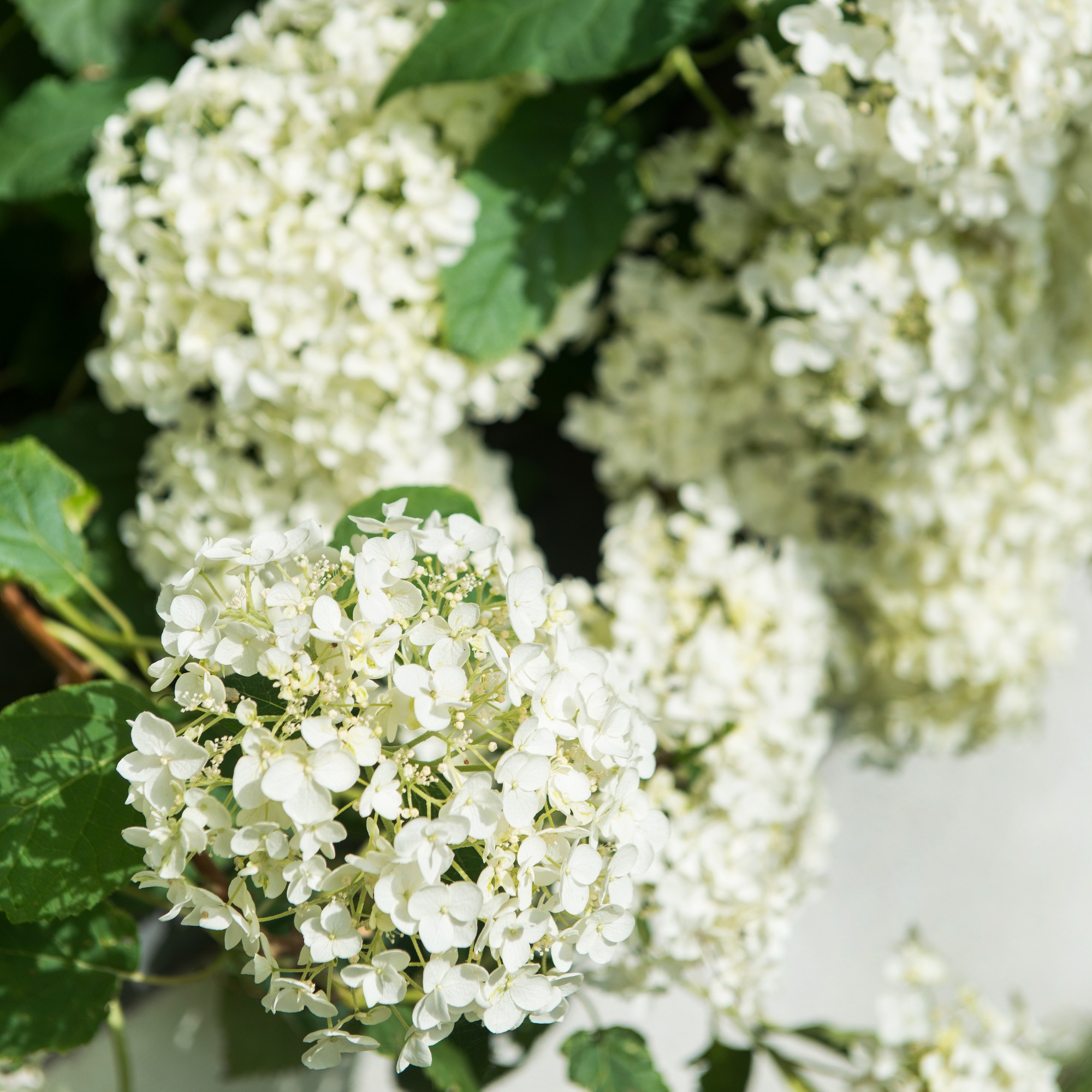
Hydrangeas are a beautiful addition to any garden with their froth of colourful petals and dense green leaves. However, with so many hydrangea varieties to choose from it can be hard to know which hydrangea to plant in your garden if you're not a gardening pro.
Whether you are growing hydrangeas in pots or adding to your garden border ideas you will need to choose the right variety that will flourish in your garden's conditions and achieve the look you're going for.
‘The Hydrangea genus actually consists of around 100 species, native to Southern and Eastern Asia (Russia, Japan, Korea and China),’ Morris Hankinson, Director of Hopes Grove Nurseries, says.
You might have heard of some of the common names for these flowering plants, from the aptly named mophead variety (also known as Hydrangea macrophylla and sometimes referred to as bigleaf) to the lace cap (Hydrangea macrophylla normalis) and the smooth (Hydrangea arborescens). But there are also ones such as the oakleaf (Hydrangea quercifolia), panicle (Hydrangea paniculata) and climbing (Hydrangea petiolaris). So, it’s easy to see why it can be rather overwhelming to choose which one is right for you and your garden.
But which hydrangea should you plant? Well, here’s everything you need to know.
The most popular hydrangea variety
‘By far the most prevalent hydrangea in the UK is the mophead hydrangea (Hydrangea macrophylla). Its sizable, round flower heads tend to be the preferred choice among gardeners, thanks to their vivid hues and greater capacity to flourish in the face of adverse weather conditions,’ says Georgina O'Grady, Managing Director at Evergreen Direct. However, it isn’t the only option available to you.
What works for one garden might not always be the most suitable for your own and for this reason, we’ve broken down the best hydrangeas to plant depending on the conditions in your garden.

The best hydrangeas for smaller gardens, patios and balconies
Just because you’re constrained to a smaller garden, or maybe only have a patio area or balcony to play with, that doesn’t mean that you can’t enjoy these beautiful blooms. And as you might expect, when it comes to choosing hydrangeas to grow in pots, the best varieties are dwarf or compact options.
Even though ‘these tend to not grow overly large, they will still need pruning occasionally to prevent overcrowding,’ Graham Smith MClhort, LBS Horticulture's Gardening Expert, affirms. ‘A dwarf variety of a Bigleaf or a Panicle Hydrangea are suitable for pots and don’t take up too much room,’ Aleksandar Kolarov, PR Specialist for Fantastic Gardeners, agrees.
Thankfully, ‘most hydrangea varieties have been bred as dwarf cultivars, so you can enjoy oak-leaf hydrangeas, lacecaps and mophead even if space is limited,’ Fiona Jenkins, Gardening Expert at MyJobQuote.co.uk, adds.
Where to buy:
- Crocus - They have a range of smaller hydrangeas including the pretty 'little purple'
- Suttons - This little Hydrangea macrophylla 'Hortbux' is perfect for plant pots

The best cold-tolerant hydrangeas
Living in the UK means preparing for particularly cold weather all year round. Because of this, there are a number of cold-tolerant varieties that you might want to bear in mind as you get planting, particularly if you live in area that can get especially chilly. And the experts concur that panicle Hydrangea and smooth Hydrangea are generally the most cold-tolerant types.
While the smooth option can be a better choice if you’re ‘wanting a variety with bigger blooms,’ Graham advises, both are tolerant of cold conditions and drought.
Where to buy:
- Gardening Express: This pretty pink Hydrangea paniculata Vanilla Fraise will add a flush of colour in cold weather

The best hydrangeas for pollinators
Those of us looking to attract more native wildlife and support the likes of bees, birds and butterflies in our gardens, might be wondering what the best hydrangea is for pollinators. And according to Aleksandar, ‘the best pollinators are oakleaf hydrangea and hydrangea paniculata.’
‘These attract pollinators with their large, accessible flower clusters. The varieties are also known for their hardiness, ease of care and reliable blooming,’ he explains. Fiona relays that ‘not all hydrangea attract pollinators and have little to offer bees, butterflies and hoverflies in terms of nectar or pollen.’ So, if this is something of great importance to you, you will need to double check before you get planting.
Where to buy:
- Crocus: Add some magic with frosty Hydrangea quercifolia Snow Queen
- Sarah Raven: The Hydrangea quercifolia 'Tara' has a dense flowerhead for a luxurious look
The best hydrangeas for beginners
‘If you're new to gardening, I recommend opting for low-maintenance hydrangeas that are more forgiving of pruning errors,’ Georgina suggests. ‘In my opinion, smooth 'Annabelle' hydrangeas and panicle hydrangeas, such as 'Limelight', are both excellent options for beginners.’
While Fiona proposes that ‘oak-leaf varieties of hydrangeas are some of the easiest to grow for someone just starting out.’ This is because ‘they are tolerant of a wide variety of situations including being able to withstand more extremes of temperature. This variety will also handle drought better and are resistant to many pests and diseases,’ she continues.
Where to buy:

FAQs
Which hydrangea has the longest bloom?
If you’re looking to enjoy these impactful flowers for as long as possible, there are a number which enjoy a particularly long bloom. ‘Panicle Hydrangeas have a long bloom period, as they often last from mid-summer through to autumn,’ admits Haute Florist's Flower Expert, Maryam Ghani. ‘Look out for ‘Limelight’ and ‘Pinky Winky’ varieties as these tend to be the longest bloomers.’
Most of their flowers can even remain on the stems through winter, unless they are trimmed off.
Are hydrangeas better in pots or the ground?
Again, this might be a case of which will work best for you and your outdoor space. If you only have a patio or balcony, unfortunately, you won’t be able to plant them directly into the ground. But having potted hydrangeas can be one way to start a balcony garden.
‘Planting in the ground provides better conditions for long-term growth as the plants can allow their roots to spread,’ Maryam adds. Plus, ‘being planted in the ground means your hydrangeas generally require less watering than if they were in pots.’ On the other hand, once you’ve ensured that the hydrangeas are suitable for pot growing before you plant them, ‘pots are ideal for smaller gardens or patio areas where the soil and light conditions are not optimal. And you can move your pots around to get them the best light,’ she concludes.
Now you know which hydrangeas are best suited to your outdoor space, which will you choose to plant up?







